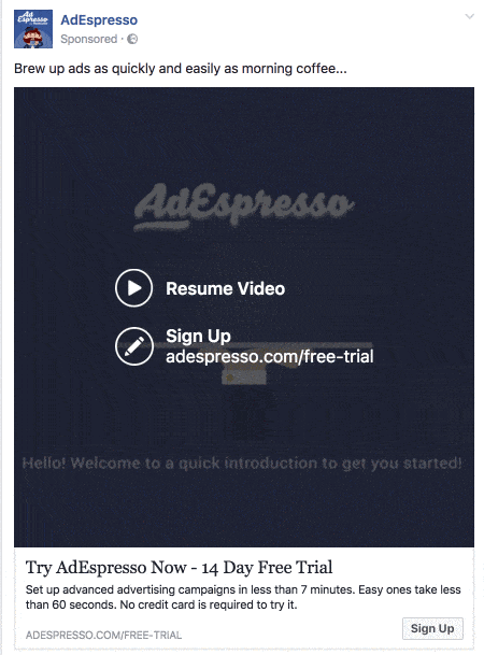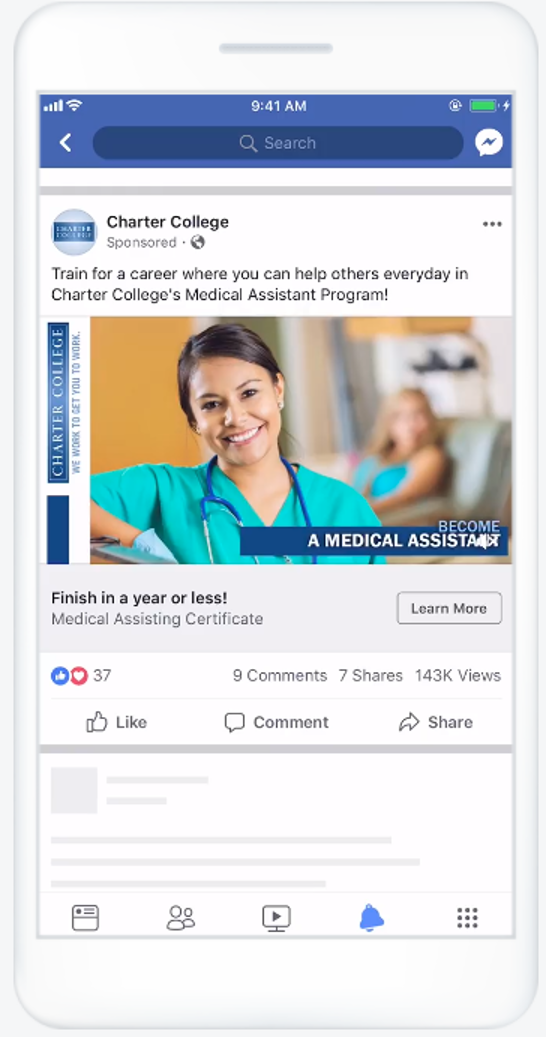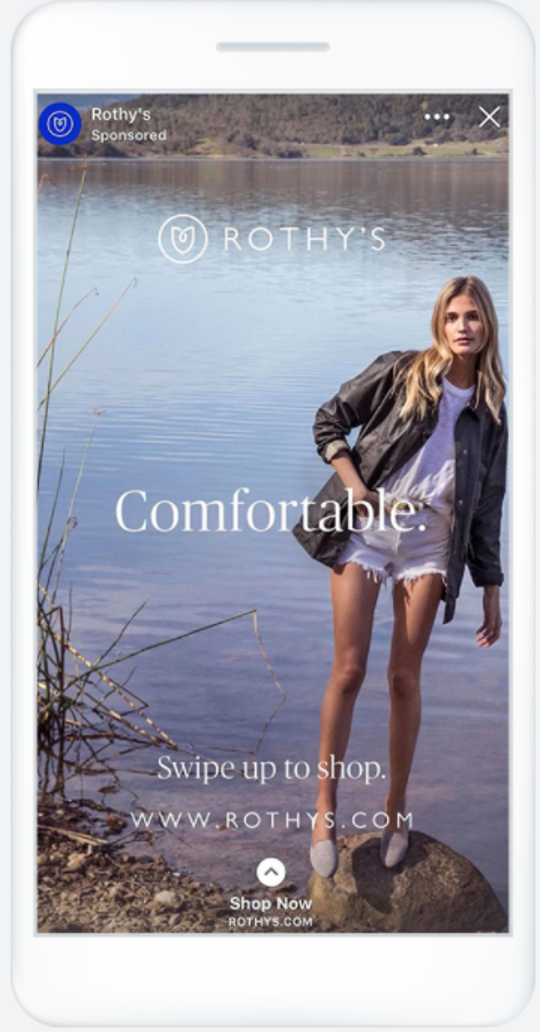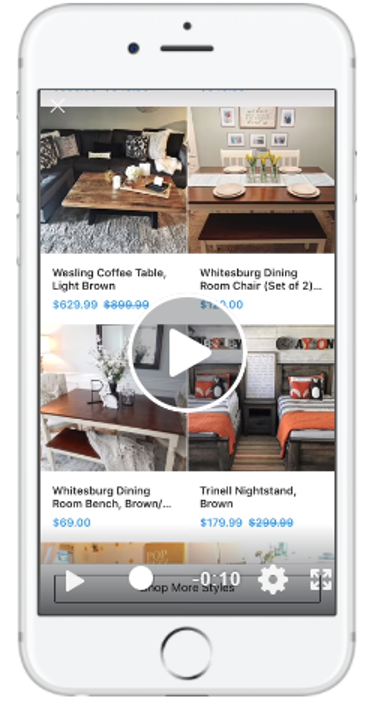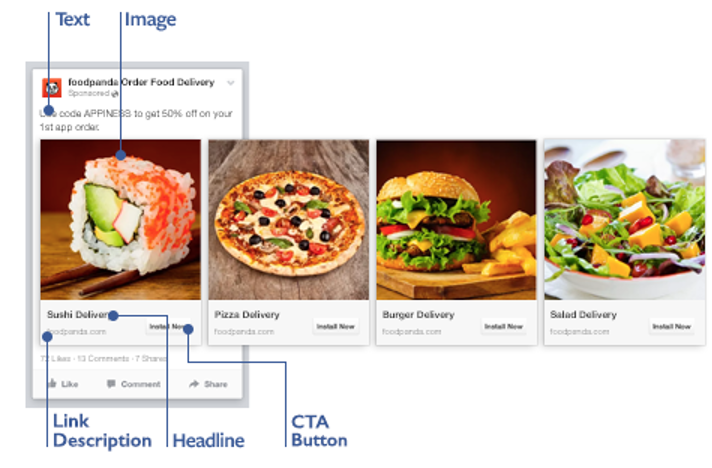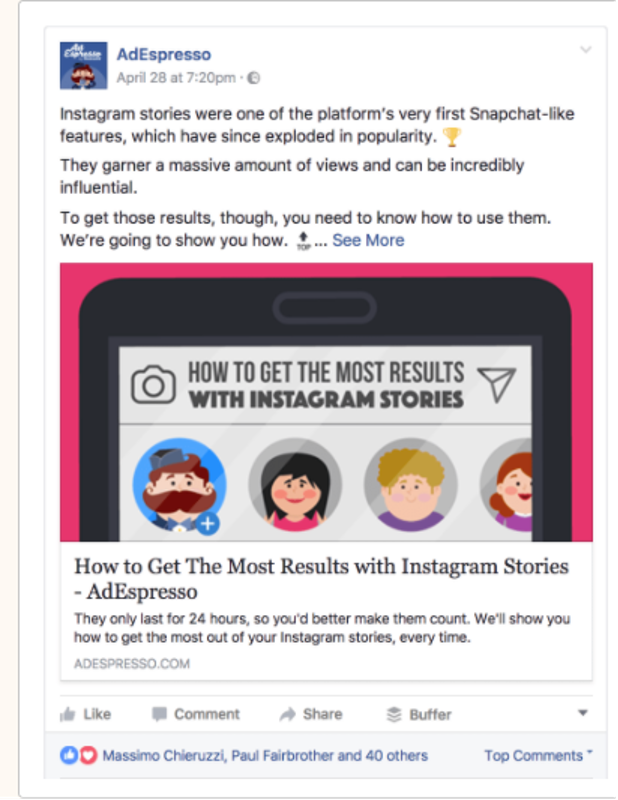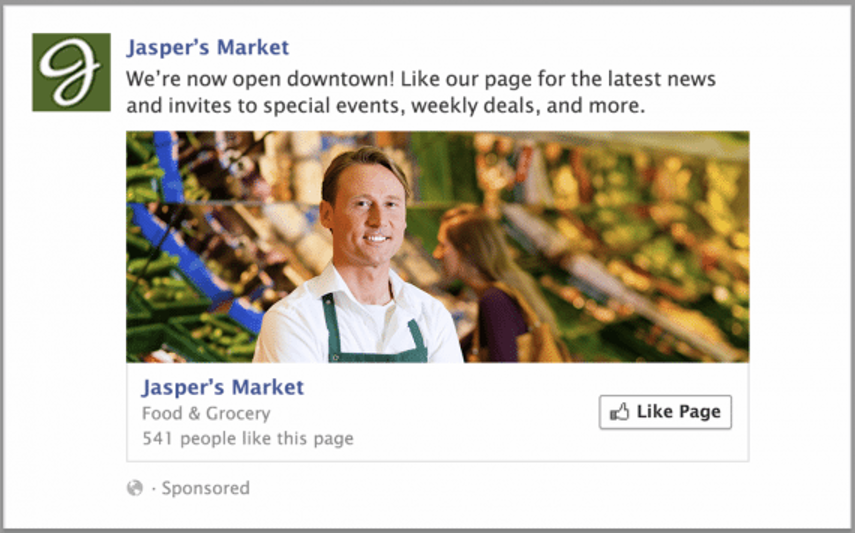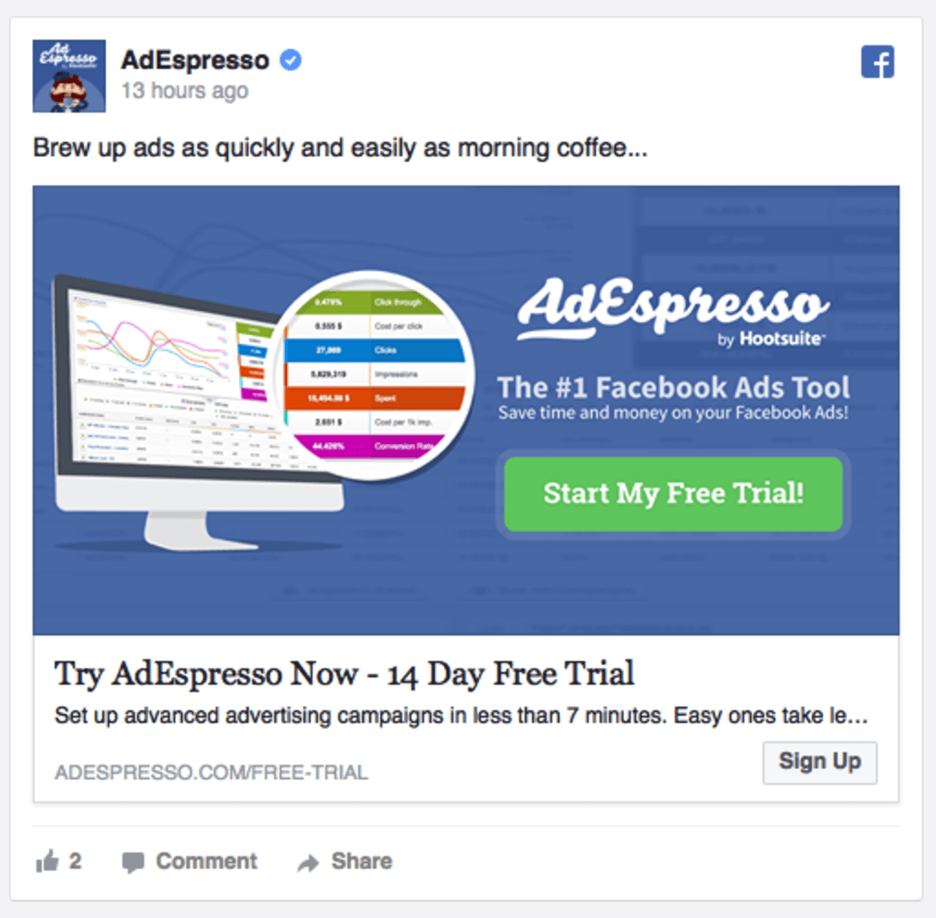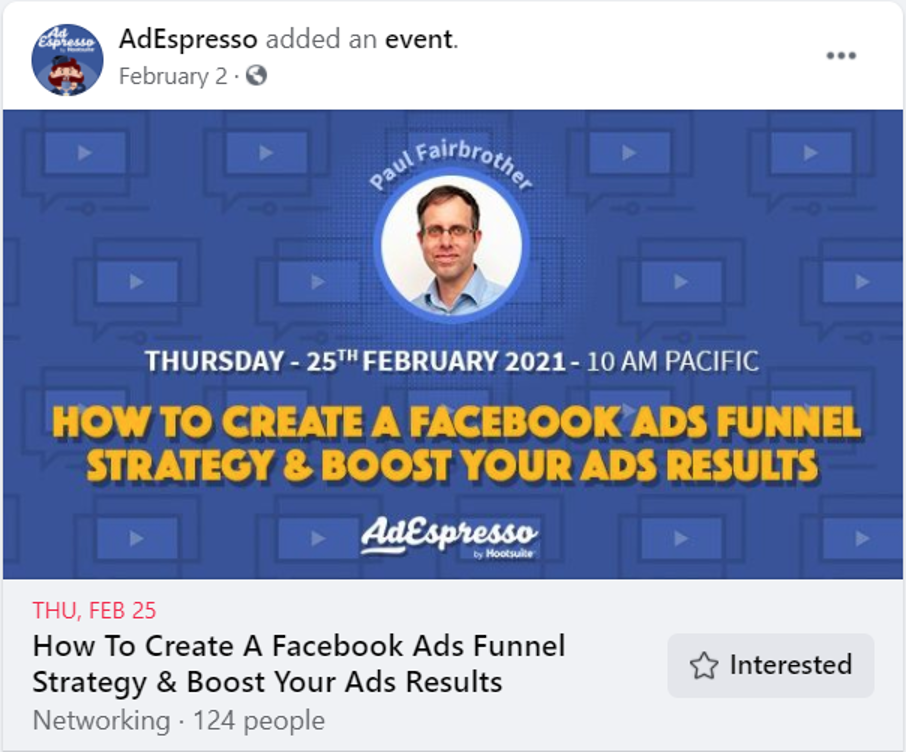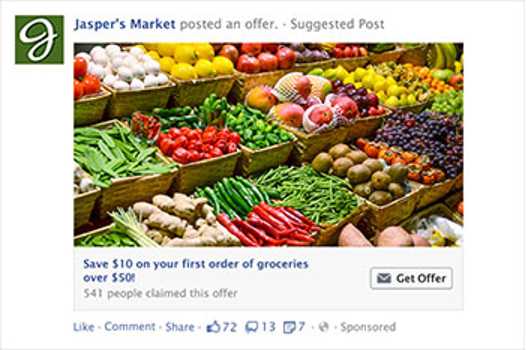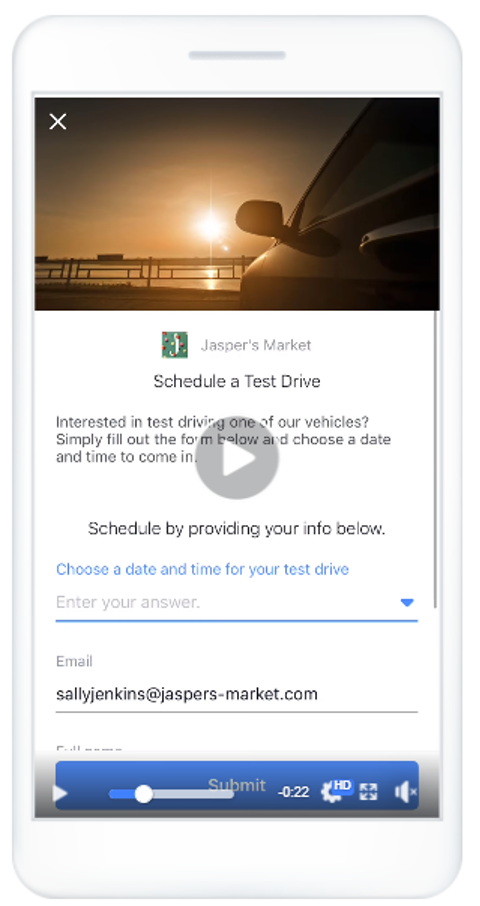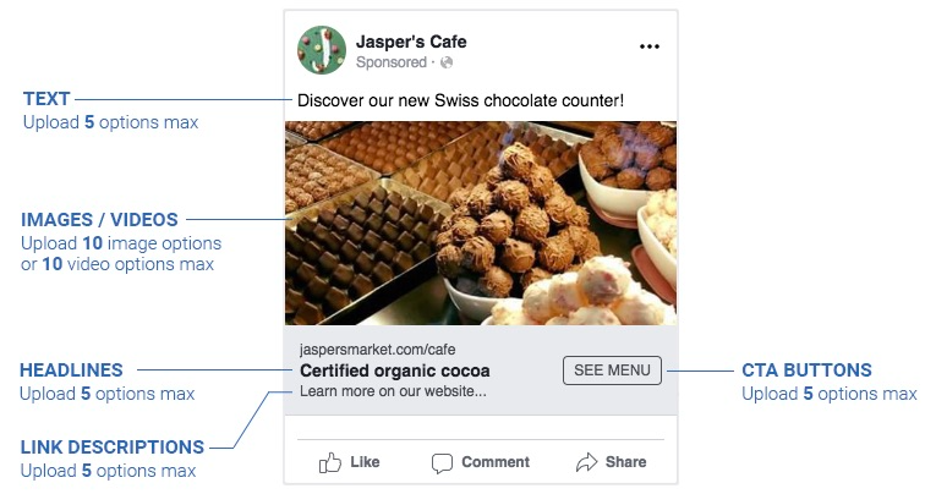The Beginner's Guide to Facebook Advertising
Chapter 3
A Breakdown of Facebook Ad Types
A Breakdown of Facebook Ad Types
In Chapter 3 of our Facebook Ads Guide, we’re going to discover all the different Facebook ad types.You’ll find the answers to the following questions:
- What basic ad formats are there on Facebook?
- What Facebook ad types can I make from my Facebook Page?
- What Facebook ad types can I make from my Ads Manager?
- How can I use each Facebook ad type for my advertising goals?
By understanding your Facebook ad format and ad type options, you can design Facebook ads that cater to your specific audience and marketing goals — and make the most out of your Facebook advertising experience.
Basic ad formats
A Facebook ad format is the basic layout of your ad: a single image with text, a video, a full-screen interactive experience, etc. There are only seven basic ad formats, but with these seven, you can design a huge number of ad types aimed at different advertising objectives.
In the section below, we will introduce the seven ad formats before expanding into the many ad types that you can make with them.
Image ads
Image ads are the most basic ad format. They contain only a single image and can be used in multiple different ad types, placements, and aspect ratios.
Image ads are easy to make and can effectively show off your product or service if you use high-quality photos. This ad format is a great all-around choice for almost any stage of your funnel, whether you want to grow your brand awareness or promote a sale to increase conversions.
Although image ads are a great all-around choice, they can also be limiting as you only have a single image to get your message across. When you want to demonstrate how your product works or show off multiple products, the single image format is not your best choice.
Best practices for image ads:
- Pay attention to aspect ratios, so your end product doesn’t get stretched or cut off.
- Put in the effort to make quality images that stand out from the rest of Facebook.
- Keep your message focused by using only as much text as you need.
Learn more about image ad specs.
Video ads
Video ads use a single video to market a product or service.
Video advertising drives high audience engagement, and even smaller companies can make simple videos to entertain and connect with their audience.
The only drawback to video ads is that they are time-consuming to make. If you have simple messages, then an image or carousel might do the job more efficiently.
Best practices for video ads:
- Keep your videos short (Facebook suggests less than 15 seconds).
- Start with a bang and get your audience engaged.
- Read our full guide to effective video ads on Facebook.
Learn more about video ad specs.
Slideshow ads
Slideshow ads are made up of 3 to 10 images or a single video that plays in a slideshow. These ads are the little cousin to video ads because they use five times less data and are intended to be used in markets where internet connections are generally limited.
Slideshow ads can also be a great stepping stone for people who have no video-making experience but still want to catch the reader’s eye with the movement and sound that makes video ads so effective.
Best practices for slideshow ads:
- Use high-quality images and videos to make an impact.
- Insert music (that you have the rights to use).
- Target slow-internet areas with slideshow versions of your best video ads.
Slideshows share the same specs as video ads.
Stories ads
Stories ads are full-screen immersive experiences that pop up in-between the Stories users watch on Facebook, Instagram, Messenger or WhatsApp. You can make your Stories with videos, images or even carousels.
Stories offer a lot more freedom of expression than your typical video or image ads, as you can experiment with video effects, emojis and even augmented reality to make an impression on your viewers.
The Stories format is great for showing off your brand, but Stories are not placed on Facebook feeds, so they aren’t a silver bullet for advertisers. The media in Stories require different formatting than image or video ads, so you might be forced to make unique content just for Stories, making them more work overall.
Best practices for Stories ads:
- Keep the pace of your Stories quick, with frequent switches between different images and videos.
- Use tools like motion and augmented reality to enhance the viewing experience.
- Optimize your images and videos to be used on a full screen.
Learn more about Stories ad specs.
Instant Experience ads
Instant Experience ads (formerly Canvas Ads) are a mobile-only interactive ad that lets users engage with your content on Facebook.
With Instant Experience ads, your target audience members can swipe through a carousel of images, tilt the screen in different directions, and zoom in or zoom out by moving their fingertips. Instant Experience ads also load 10 times faster than standard mobile web applications!
Instant Experience ads are a great tool overall, but if you are new to advertising on Facebook, they may require more time than they are worth. If you aren’t particularly tech-savvy, it could be better to just stick with more basic ad formats.
Best practices for Instant Experience ads:
- Facebook recommends that you use five to seven components (images, videos, etc.) in your ad as these get more engagement.
- Use a pre-made template to save time.
- Repeat your central theme often throughout your ad.
Learn more about Instant Experience ad specs.
Carousel ads
With carousel ads, readers can flip through multiple images or videos, each with its own headline, link, or description.
Carousels are great for introducing readers to a broad range of your products, as each image in the carousel can have its own landing page specifically tailored for that product.
The carousel format can also be effectively used to tell a story or explain a process by splitting up each section across different sections of your carousel.
Best practices for carousel ads:
- Make multiple unique headlines, CTAs, and descriptions for each part of your carousel.
- Show the top-performing images or videos first to hook your audience.
- Link to multiple landing pages for a more personalized experience.
Learn more about carousel ad specs.
Collection ads
A Collection ad is like a mobile window-shopping experience where, with one tap, readers can scroll through your product lineup. You can think of Collection ads as a more advanced carousel ad — both show off your product lineups, but Collection ads are more customizable and full-screen.
Collection ads are perfect for large online stores, but for companies that sell a limited number of products or services, there are probably better options for you.
Best practices for Collection ads:
- Let Facebook algorithms decide which products from your catalog are included for each specific user.
- Fill your catalog with a variety of products that Facebook can choose from.
- Pick an eye-catching image to draw people into clicking on the ad.
Learn more about Collection ad specs.
Facebook ad types
Ads on Facebook are created based on objectives like brand awareness, conversions or leads. Each of these objectives has a corresponding ad designed to accomplish that goal; these are called ad types.
In this next section, we will go over the ad types you can make on Facebook. We have divided them based on where you make these ad types. With Facebook advertising, you can create ads in two places:
- Your Facebook Page
- Your Ads Manager
Typically, the ad creator on your Facebook Page is focused on simplicity and speed, whereas the Ads Manager ad creator allows you to go more in-depth. Understanding what you can do on both of these platforms is key to making ads on Facebook.
Ads created from your Facebook Page
The easiest way to make Facebook ads is directly from your Facebook Page. Just click on the Promote button, and you can start the process of getting your brand and products out there. You cannot create all ads from your Facebook Page, but you can create:
- Boosted posts
- Page Likes ads
- Website Visitors ads
- Website Purchases ads
- Automated ads
- Lead ads
- Event ads
As you can also make lead ads and event ads on the Ads Manager, we will look at those ad types in the next section.
Boosted Posts
Every time you post something on your Facebook Page, Facebook offers you the chance to amplify the post’s reach with a Boosted Post.
After you click on Promote, just choose Boost a Post to get your post in front of more people across Facebook’s advertising network.
The Boosted Post will look exactly like an ordinary Facebook post, with a Sponsored note on top of the ad.
Page Likes ads
Page Likes ads are the go-to option for increasing your page likes. They can be displayed on all placements and include a visible CTA (call to action) that allows readers to immediately like your page.
You can make a Page Likes ad by clicking on the Promote My Page option on the Promote menu.
Website visitors ads
This ad type helps to promote your external website by sending people to your landing pages or blog posts. You can use website visitors ads across several placements, allowing you to reach a large audience.
You can make a website visitors ad by clicking on the Get More Website Visitors option on the Promote menu.
Website purchases ads
The website purchases ad uses your Facebook pixel data to target ads at people who have already shown an interest in the products on your website.
Before you use these ads, you’ll need to set up your Facebook pixel so it can collect all of the data that you’ll need.
You can make a website purchases ad by clicking on the Get More Website Purchases option on the Promote menu.
Automated ads
An automated ad is a perfect balance between a simple page boost and a full-fledged marketing campaign organized from your Ads Manager. Instead of having you do everything, the automated ad walks you through the process, using AI to help you get the most out of your targeting, placements, and ad budget.
You can make an automated ad by clicking on the Get Started With Automated Ads option on the Promote menu.
Messenger Ads
Supported placements: Messenger Inbox Messenger Stories
Messenger ads appear in the main tab of Facebook messenger, where people spend time chatting with friends.
A user will see your ad in the inbox amongst their conversations, and can click to initiate a Facebook conversation with your page.
Specs:
- Recommended image size: 1,200 x 628 pixels
- Minimum width 254 x 133
- Image ratio: 1.9:1
- Text: 125 characters
- Headline: 25 characters
- Description: 30 characters
Ads created from your Ads Manager
The Ads Manager that we set up in Chapter 2 is the other place to design ads on Facebook. Ads Manager has more options compared to your Facebook Page. Also, if you want to create custom audiences or catalogs, that’ll need to be done through Ads Manager, making this more of a one-stop-shop for all of your Facebook ad needs.
When creating from the Ads Manager, you can make:
- Event ads (also available from your Facebook Page)
- Offer ads
- Lead ads (also available from your Facebook Page)
- Dynamic creative ads
- Dynamic ads
- Mobile app ads
Event Ads
An event ad is an ad that helps you market your Facebook events to your target market, helping you grow the reach and impact of your events.
Depending on the size and relevance of the event you’re promoting, you may want to limit the ad’s geographical reach to people living in the same city or region as the event.
Offer ads
This ad type is perfect for online or brick-and-mortar store owners who want to attract more people to their shops.
With an offer ad, you can give users the chance to redeem a special offer on your products or services. By offering a special discount or promotion on Facebook, you can encourage new customers to try your product or bring back old customers who need that extra little push to commit again.
Lead Ads
A lead ad is an ad with an Instant Form attached to it so that you can learn valuable information about future potential customers.
You can use lead ads to gather contact information for future promotions, do market research on your target audience, or drive engagement with your brand.
You can learn more about this kind of Facebook ad by taking a look at our complete how-to guide on making lead ads.
Dynamic creative ads
A dynamic creative ad is an ad where you give Facebook multiple ad creatives, CTAs and copy sets that it can then mix-and-match to target each individual reader.
These ads are perfect when you have a product with multiple target markets. For example, you could promote your Christmas sale with a dynamic creative ad with several products and creatives designed for couples, parents, or grandparents, and then Facebook will choose the most appropriate one for each reader.
Dynamic Ads
Facebook’s dynamic ads are like remarketing display ads on steroids. They target users based on past actions (or inactions) on your website with a perfectly timed ad.
All you have to do is upload your product catalog to Facebook and double-check that your pixel is installed correctly on your site. Facebook handles the automation and retargeting! For more on dynamic ads, read our beginner’s guide.
Mobile app ads
Mobile app ads are the perfect choice to drive more installs to your mobile app. This ad is displayed only on the mobile News Feed.
When users click the Install CTA on your ad, the App Store will immediately pop up. This makes it easy for your readers to quickly go from being interested in your app to downloading it in a flash.
And now lets get to work
As you’ve seen, Facebook has a very broad offering of ad formats and ad types that can meet the needs of any business. Whenever possible, we suggest you test different ad formats and see which ones perform better for you. This will deliver the best results at the lowest cost.
For a complete overview of all Facebook ad types and specs, see this guide by Facebook.
Now that you have a clear idea of what you can advertise on Facebook, let’s move on to Chapter 4 and learn how to bring each and every Facebook ad type to life with stunning ad designs and compelling ad copy!


